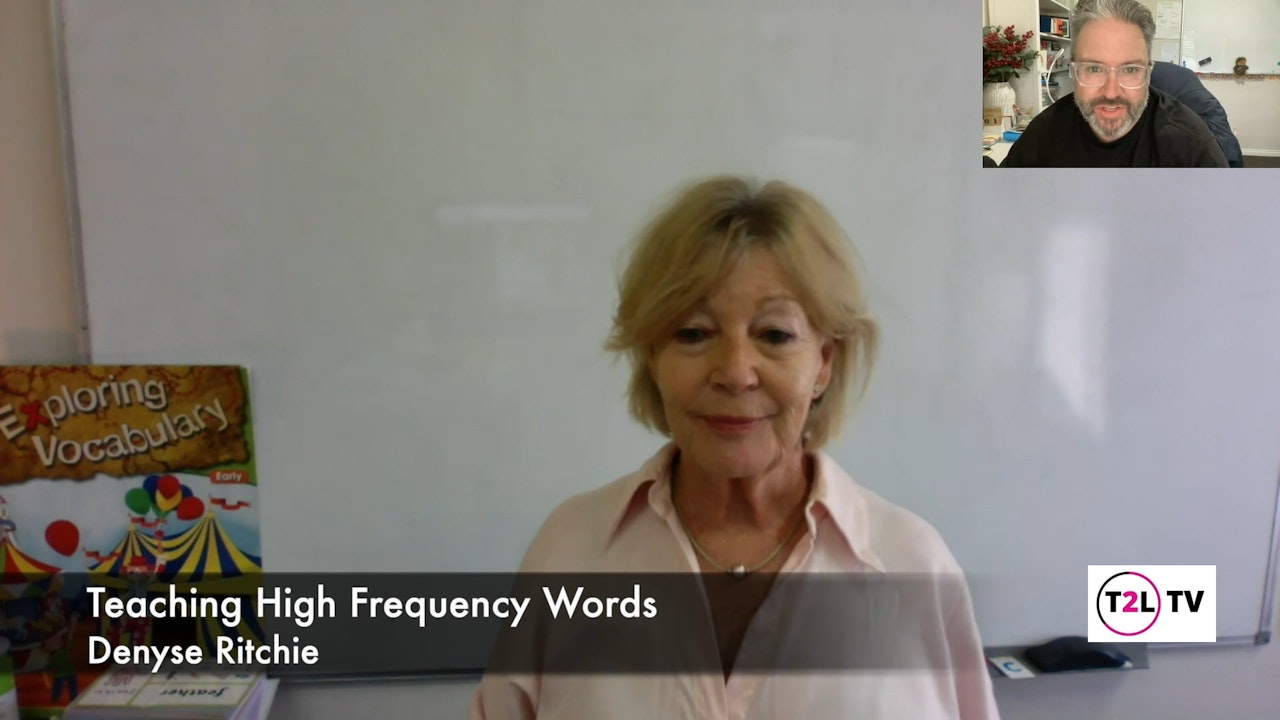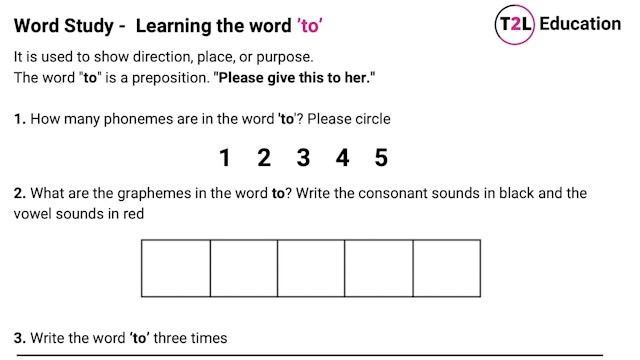-
Teaching 'went'
The video emphasizes the importance of differentiating 'we' and 'went' to avoid confusion. It highlights the challenges in word analysis and the significance of recognising phonic patterns. Denyse introduces the concept of orthography and common patterns in words, explaining the benefits of build...
-
Teaching 'when and where'
The focus is on high frequency words 'when' and 'where', highlighting the spelling pattern for words that start with WH. English, being a morpho phonemic language, requires teaching phonics by identifying common patterns. The importance of teaching letter names and using hooks and anchors is emph...
-
Teaching 'to, to and two'.m4v
This content delves into the challenges learners face when differentiating between 'two', 'to', and 'too'. It highlights the morpho-phonemic nature of English and the significance of understanding various letter patterns representing different sounds. It explains the usage and meaning of 'to' and...
-
Teaching 'that, this and is'
The video delves into the phonemic awareness of the words 'is', 'this', and 'that'. It explores the two common phonemes of the letter 's' and differentiates between unvoiced and voiced sounds. The video also discusses teaching strategies for these words, emphasising their usage and meanings. It f...
-
Teaching 'was'
Children frequently confuse 'was' with 'WOZ' due to the phonetics of 'O'. This can be rectified by teaching them about letter sounds, alternative spellings, and orthographic patterning. These techniques can enhance their understanding and improve their spelling accuracy.
#Children #SpellingMista...
-
Teaching 'has' and 'had'
The video introduces the teaching of 'has' and 'had' in spelling, especially for ESL learners. It explains the meaning of 'has' as belonging and compares it with 'had' in terms of tense. The video emphasises teaching these words together due to their simplicity and frequent use. It provides a pho...
-
Teaching 'of'
This content delves into the common misspelling of the word 'of' as 'OV', underscoring the significance of phonemic awareness and orthographic knowledge. It explores the concept of voiced and unvoiced sounds, particularly the sound 'V'. It also presents teaching strategies for the word 'of' and w...
-
2. Teaching 'you'
The video delves into the word 'you', its meaning, and usage. It addresses the challenges associated with this word, underlining the significance of phonics. It further explains the various sounds of 'ou' and provides tips on teaching words that contain 'ou'. The video ends by stressing the impor...
-
Teaching 'how'
The video explores the word 'how', its meaning, and its importance in learning. It delves into the use of 'how many' and the significance of counting. It also highlights the challenges associated with 'how', including spelling patterns. The need for phonemic awareness to understand words like 'ho...
-
Teaching 'been'
This content delves into the word 'bean', focusing on its use in past tense questions. It analyses the sounds in 'bean' and explains the significance of English as a morpho phonemic language. The double E spelling in words like 'be' and 'tree' is emphasised, and the correct writing of the letter ...
-
Teaching 'any'
The video introduces the word 'any' and discusses the challenges with the letter A in words like 'any' and 'many'. It categorises these as sight words or tricky words and emphasises the importance of teaching phonics patterns and the sounds of the letter Y. The video also underscores the signific...


























